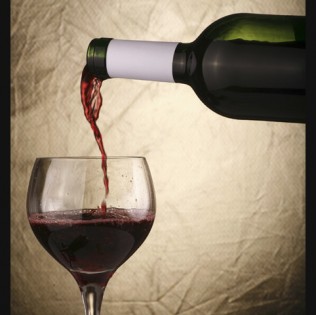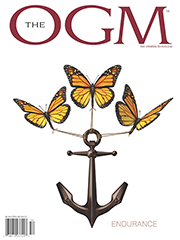by TheOGM
Published on April 5th, 2010
Riesling: The Wine World’s Worst Kept Secret
This is not another story of revival, renaissance, recovery or any such thing for the Riesling grape, but it is a tale of something more. In fact, Riesling is a bit of a constant in a wine world full of short-lived trends. Pundits are too quick to pronounce that Riesling is the next big thing, on the verge of joining Chardonnay or Sauvignon Blanc as the new darlings of the wine world. These assertions have been going on for decades, but it never happens, and for Riesling, this may well be a good thing.
Riesling, as a grape variety, has a great wine history. Hailing from Germany, the grape has been favourably mentioned in history for over six centuries. For a period, it was considered to produce some of the world’s greatest wines, while the likes of the currently in vogue Bordeaux were mere quaffers.
However, it hasn’t been all smooth sailing for Riesling. The variety underwent, perhaps, its most severe decline in popularity in the 1980s after its good name was tarnished with a slew of sweet, simple “sugar-water” wines. The side-effect was an entire generation of baby boomers cajoled into believing that Riesling could only be sweet, German and, decidedly, uncool. This was not the first time the light nature of Riesling has caused it problems. In the Middle Ages, Riesling from Alsace was often fortified or spiced to make it fuller-bodied and, therefore, provide competition for the naturally burlier wines of the Mediterranean.
Through its up and downs, the Riesling grape has observed it all - changing international boundaries, countless wars, different rulers, and, yet, it must have one of the most stable curves of popularity of any variety. In fact, there is no curve at all but a slow, steady line of growth.
Why has Riesling, with all its impressive history, not infatuated wine drinkers to the point where there is a bottle on the table every night? There is something unique about the taste of Riesling that sets it apart. Newer wine drinkers tend to be swayed by sweetness, lower acid and softness in a wine. With the exception of the fabulous, delicate and balanced Rieslings from Germany, which courtesy of the 1980s, most wine drinkers now have an aversion to, Riesling tends to be intense, high in acidity, racy and lean: everything a new palate to wine is trying to avoid. To make matters worse, Riesling ages not just to honey and spice flavours, but it also has a distinctive kerosene or diesel aroma – something certainly not for everyone.
Nonetheless, with time and after exploring the wines of the world, the characteristics of Riesling has started to intrigue wine drinkers. Eventually, people and palates tire of simple wines, and they start looking for something with a bit of edge. Thus, it is here that Riesling delivers – the intense green apple, mineral, citrus and floral flavours and aroma excite the palate, and, before long, you are hooked. It is also a great food wine, standing up beautifully to crisp and light spring dishes.
The further one ventures into the wine world, the more one seems to fall in love with Riesling; yet, still, in spite of the “love fest” amongst wine media and influential wine people, the general public just never quite gets on board. For those that love Riesling, this is not a bad thing because it keeps prices in check and ensures even the world’s greatest Rieslings are relative bargains compared to other top wines of the world.
Once you move beyond the cheapest and simplest wines, the world of Riesling is a very exciting place to explore. Great Riesling wines are routinely made in the classic wine regions of Germany, Alsace in France, Austria and Australia, and in upcoming regions of Okanagan and Niagara in Canada. New Zealand and Washington State are also showing great potential.
One of the major developments to have hit Riesling in recent years is the confidence of producers to produce drier wines. Yes, Riesling is not always sweet. Even the old standbys Black Tower and Blue Nun have changed and are now nearly dry. As more great wines emerge from the classic regions, producers are starting to see the Riesling grape as not just a cheap, simple sweet quaffer but as something that can produce really great wine. The wine drinker is the beneficiary, so let us hope that Riesling stays out of the limelight, so we can enjoy this little secret of the wine world for a few more years.
Sustainable Riesling Wines for this Spring
Tantalus Riesling 2008, Okanagan, British Columbia, Canada (13.2%), $23 (BC pricing).
Hailed by the likes of wine legend Jancis Robinson, the Tantalus Riesling is helping to put BC Riesling on the map. Starting in the vineyard, Tantalus is well on the way to organic certification, managing the old vines with small amounts of irrigation and sustainable techniques such as compost and compost teas to provide nutrition for the vines. The winery is also working towards becoming BC’s first LEED (Leadership in Energy and Environmental Design) certified winery. All of these techniques come out of a respect for the vines. In 2008, these vines have produced a very intense, aromatic wine with aromas of apple, pear, peach, lime, passion-fruit, lemon curd and a touch of flowers. The palate is bone dry, crisp and powerful with mineral and passion-fruit, lime, peach skin and green apple flavours with excellent persistence, lingering on the palate. This zingy wine is delicious to drink now, but the complexity will reward cellaring for up to a decade.
Weingut Max Ferdinand Richter Wehlener Sonnenuhr Riesling Spätlese, 2007, Mosel, Germany (7.5%), $39 (BC Pricing)
Sustainability for Weingut Max Ferdinand Richter comes in the form of 300 years of family ownership and a team that has decades of experience working the vines together. With 40 acres of stunning, steeply-sloped vineyards, Richter produces some of Germany’s best wines. Winemaking is old school with late harvesting for full ripeness and fermentation in neutral old oak casks. The 2007 Spätlese from the Wehlener Sonnenuhr vineyard is the fantastic, classic German style, intense yet elegant, fruity yet savoury, and it has a very long, persistent and complex taste. The wine is off-dry, high in acidity and with flavours and aromas of apple, pear, mandarin orange, mineral and blood orange: A wine suitable for now or to age for over a decade.
Pyramid Valley Vineyards ‘Lebecca Riesling’ 2006, Marlborough, New Zealand (8.5%), $25 (BC Pricing)
New Zealand is often bridging the gap between dry, new world style wines and the traditional style of Germany. This Pyramid Valley Riesling is a medium-sweet style that uses natural winemaking and biodynamic growing techniques. Natural winemaking is a big trend in the wine world involving wild yeast fermentation and little intervention. The wine is pale lemon in colour with a medium-sweet palate, high acidity, and a light delicate body with good intense flavours of lemon, apple, grapefruit pith and some savoury lees and baking spice notes.
Domaine Weinbach Cuvée Sainte Catherine Riesling 2004, Alsace, France (13.5%), $59 (BC Pricing)
Weinbach is producing wines using biodynamic techniques designed to preserve and enhance the soil and improve a vines, natural defences against pest and disease. Tasks are performed based on the cycles of the sun and moon. The wines are very serious; the 2004 Cuvée Sainte Catherine Riesling a full, dry, rich and intense style of Riesling. Complex aromas and flavours of honey, baked peach, apricot and spice linger on a long finish. Very different in style to the wines of Germany just across the border, this wine forgoes finesse for power.
Did you enjoy this article?



 Women, And Wine
Women, And Wine The Odyssey Experience
The Odyssey Experience In Spirit
In Spirit Texas Wines of Our Times
Texas Wines of Our Times A Bottle of Red
A Bottle of Red
